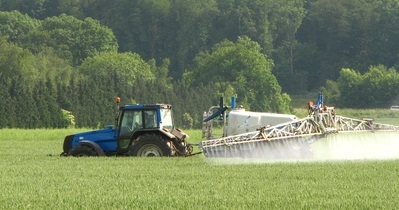Categories
Calendars
Guides
Reviews
Archive
Gallery
Articles
Ask Our Gardening Expert
A Beginners Guide to Herbicides
People have conflicting views on the use of herbicides. The organic growers will not use them, relying on cultural control. There are circumstances when their use will save a lot of effort, allowing us to spend more time on more interesting work. Brands and chemical names can be confusing. A little knowledge will help us to use these preparations to the greatest effect.
Herbicides can be grouped according to their effect on plants. You will probably notice that different herbicides are recommended for different situations. Herbicides for keeping paths and drives clear of weeds are different from those used to suppress weeds in rose beds. Some may be effective for long time, others for a short time. Before using herbicides, it is best to read the labels to find out the active ingredient, application rates and recommended use. Herbicides generally work by disrupting the plant’s living systems.

Paraquat is one of the most widely used herbicides. It is fast acting and non-selective, killing green tissue on contact and has no effect on woody stems and plant parts below ground. It is toxic to humans and animals. It can therefore be used for clearing annual weeds, especially around tree stems.
Glyphosate is used to kill broadleaf weeds and grasses. It is translocated, absorbed through foliage and transported by the living system to other parts. It is only effective on growing plants and loses its effect when it touches the soil. It is very widely used.
Amitrole is a more effective, non-selective systemic herbicide used to control more difficult weeds like docks, bamboo and couch.
Dicamba controls tougher annual and perennial weeds, notably bracken and nettles.
Simazine is a residual herbicide, staying in the soil and effective for up to six months. It is used as a pre-emergent treatment, preventing the germination of weed seedlings. It d can be safely used under trees but must be kept away from herbaceous perennials and shrubs. It is taken in through the roots and is less effective on deeply rooted perennial weeds and deeply planted seeds.
Dalapon is used as a selective herbicide on grasses and other monocotyledons.
Sodium chlorate was once commonly used but is now banned in many countries. It is toxic to all plants and therefore non-selective. It is absorbed through the roots and remains in the soil for long periods. It is highly inflammable and any stocks should be disposed of safely.
2,4-D is a common active ingredient in lawn weedkillers to control broadleaf weeds.
Often, a ‘cocktail’ of herbicides is used for a specific purpose. For paths and driveways, a mixture of amitrole, dalapon and simazine is used. The amitrole kills broadleaf weeds, the dalapon affecting grasses and simazine controls growth from seeds that may be e present. Although non-selective herbicides like glyphosate are used to clear ground for cultivation, as in overgrown gardens or allotments, non selective herbicide can be used ‘selectively’. Herbicides like amitrole and dicamba can be used for ‘spot’ control of individual troublesome weeds growing among desirable plants. Extreme care must be taken to shield surrounding plants from spray drift.
Safe use of herbicides:
- Follow directions on label
- Spray in calm conditions to avoid spray drift
- Mix only enough for the job
- Apply at the recommended rates
- Keep the product in its original container
- Take unwanted herbicides to a toxic waste disposal depot
- Store out of reach of children, in a locked cupboard
Herbicides have a place in gardening, to save time and effort and as a last resort. Just use them sparingly and wisely and there should be no trouble. Products normally sold over the counter at a garden centre are fine as long as safety procedures are followed.